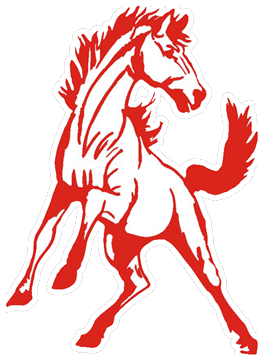Quick Links
Sweetwater Sports Medicine
The Sweetwater ISD Athletic trainer helps to prevent and treat injuries for all of the student athletes of SISD. Recognized by the American Medical Association as allied health professionals, the SISD athletic trainer specializes in the prevention, assessment, treatment, and rehabilitation of musculoskeletal injuries. The SISD Athletic trainer is often one of the first health care providers on the scene when injuries occur, and therefore is able to recognize, evaluate, and assess injuries and provide immediate care when needed. The SISD athletic trainer also is heavily involved in the rehabilitation and reconditioning of injuries.
The SISD Athletic trainer helps to prevent injuries by educating athletes on proper mechanics and technique to prevent injury. Injury prevention also includes advising on proper use of equipment and applying protective or injury-preventative such as tape, bandages, or braces. During the school year the athletic training room will open at 7:00a.m. Injured athletes should come in at this time for evaluation and rehabilitation.
Concussion Mgmt
Recognizing Concussion
Concussions do not always involve a loss of consciousness. ANY traumatic blow to the head or to another part of the body (which causes a whiplash effect to the head) should be considered as a mechanism of concussion injury. While headache is the most common symptom of concussion, all people will experience concussions differently. Therefore, all of the potential signs and symptoms of concussion should be considered. A symptom checklist can assist the evaluator in making a more objective return to play decision.
*If a player sustains any signs or symptoms of concussion, he/she must be pulled from play. Only a physician trained in concussion management may clear the athlete to return to play once a concussion was discovered via the athletic trainer’s evaluation*
Concussion Signs and Symptoms
Amnesia Loss of orientation Balance problems Memory problems “Bell rung” Nausea Dazed or Confused Nervousness Depression Numbness or tingling Double vision Drowsiness | Poor concentration Easily distracted Personality changes “Glassy Eyed” Excessive sleep Ringing in the ears Fatigue Sadness Feeling “in a fog” Seeing “stars” Feeling “slowed down” | Sensitivity to light Headache Sluggishness Inappropriate emotions change in personality Sensitivity to noise Irritability sleep disturbance Loss of consciousness Vacant stare Vomiting |
Returning to Play
Athlete must be evaluated and have written clearance by a licensed physician to begin the return to play protocol.
Progression will be initiated by the SISD Certified Athletic Trainer/school nurses. All steps of the progression will be documented.
Athlete must be symptom free for 24 hours prior to initiating the gradual return to play protocol.
Return to learn may begin
The athlete must remain symptom free in order to move on to the next stage, and may only move one stage per 24 hours.
**If the athlete displays symptoms at any time during the gradual return to play they will discontinue activity and must be cognitive and physical symptom free for 24 hours before protocol is begun again.***
***The Sweetwater High School Athletic Training Staff and Physician will make the final determination regarding the return to play***
***Gradual Return to Play protocol must be implemented by the Athletic Trainer***
Return to Play form must be completed and submitted to the Athletic Trainer.
Gradual Return to Play
Stage 1: Low levels of physical activity on an exercise bike or light jog; light weight lifting/resistance training (low weight-moderate reps, no bench, no squats)
Stage 2: Moderate levels of physical activity with body/head movement with a helmet or other equipment. This includes moderate jogging, brief running, moderate intensity on the stationary cycle, moderate intensity weightlifting (reduced time and intensity from typical routine).
Stage 3: Non-contact training drills in full uniform. High intensity stationary cycling; regular weight lifting, resistance training, or other exercises.
Stage 4: Full contact practice or training.
Stage 5: Full return to play
Concussion Management Team
Once a concussion has been diagnosed by either the Athletic trainer or physician. The Athletic trainer will then communicate with the school nurse as well as the counselor. The school nurse will then communicate with the athletes' teachers, if modifications need to be implemented in the classroom.
